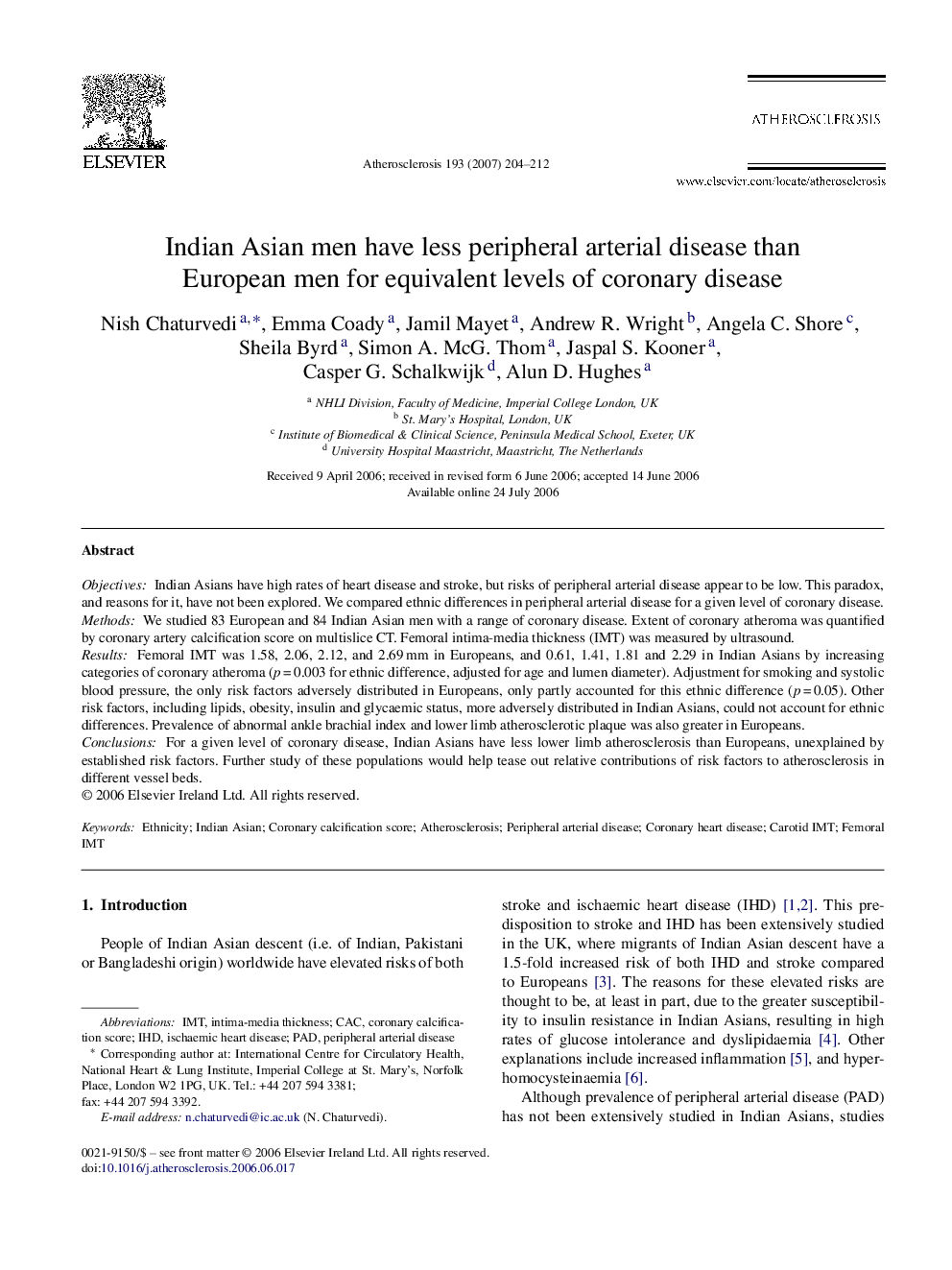| Article ID | Journal | Published Year | Pages | File Type |
|---|---|---|---|---|
| 2894708 | Atherosclerosis | 2007 | 9 Pages |
ObjectivesIndian Asians have high rates of heart disease and stroke, but risks of peripheral arterial disease appear to be low. This paradox, and reasons for it, have not been explored. We compared ethnic differences in peripheral arterial disease for a given level of coronary disease.MethodsWe studied 83 European and 84 Indian Asian men with a range of coronary disease. Extent of coronary atheroma was quantified by coronary artery calcification score on multislice CT. Femoral intima-media thickness (IMT) was measured by ultrasound.ResultsFemoral IMT was 1.58, 2.06, 2.12, and 2.69 mm in Europeans, and 0.61, 1.41, 1.81 and 2.29 in Indian Asians by increasing categories of coronary atheroma (p = 0.003 for ethnic difference, adjusted for age and lumen diameter). Adjustment for smoking and systolic blood pressure, the only risk factors adversely distributed in Europeans, only partly accounted for this ethnic difference (p = 0.05). Other risk factors, including lipids, obesity, insulin and glycaemic status, more adversely distributed in Indian Asians, could not account for ethnic differences. Prevalence of abnormal ankle brachial index and lower limb atherosclerotic plaque was also greater in Europeans.ConclusionsFor a given level of coronary disease, Indian Asians have less lower limb atherosclerosis than Europeans, unexplained by established risk factors. Further study of these populations would help tease out relative contributions of risk factors to atherosclerosis in different vessel beds.
